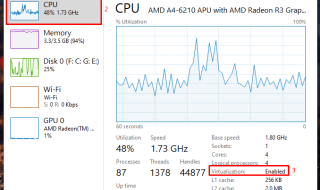Are you unable to begin writing your difficult research paper because you are gazing at a blank page on your computer? Research papers are difficult, time-consuming tasks, but most importantly, they account for a sizable portion of a student’s mark in every subject. Academic writing can be challenging, but having good written communication skills can help you succeed in college, graduate school, and your future employment. You should therefore put in a lot of effort to become an expert paper writer. If, for any reason, you cannot get this work done by yourself, reach out to a professional academic helper at writemyessays.
Keep reading to discover practical tactics that will make this procedure as easy as possible if you are unsure of where to begin.

Contents
Step 1. Select a topic.
College students may occasionally have research paper themes provided to them, but if you are fortunate enough to have this opportunity, pick your subject carefully. Consider picking a difficult subject that interests you first. Then, the research won’t be boring because you’ll probably learn something new, and the writing will be enjoyable. Avoid choosing topics that are too specialized or broad.
Your research paper won’t likely be effective if your topic is too general, because it will appear to be an overview. Your theme should be specific, manageable, and limited to one particular element, notion, or idea. For instance, if your topic is “Global Warming,” you should make it more specific by including “Causes of Global Warming,” “Impact of Global Warming on Human Health,” or anything like that.
Step 2. Put together a working thesis statement.
Before you start organizing your study, create a working thesis since it will direct your inquiry and keep you on topic. Your thesis should be clear and appropriate for the kind of paper you are writing. Three categories may be used to classify all research papers:
- compelling if you are advocating the conclusion; argumentative
- expository while imparting knowledge;
- when you share your analysis of a particular piece of information.
To ensure that your project has a clear goal, you must invest enough of your precious time in developing a decent, powerful thesis statement. Because your statements should be backed up by facts, your thesis should be disputed and specific. If it is true, you will need more proof to persuade your audience that your claim is true. When I look for help writing my essay, I ensure that the writer I choose is familiar with this concept.
Step 3. Research Your Topic
You should gather enough reliable secondary and primary sources for your paper’s topic, read each one attentively, and then look for pertinent data to back up your thesis. At this point, you should assess your sources, make notes, and begin citing them using the citation style that your instructor has indicated (APA, MLA, Chicago, Harvard, etc.).
Use the most recent version of any style manual you are using. When drafting your paper and creating your bibliography, you will go back to your reference list notes. To avoid plagiarism, you must properly credit all sources utilized for quoting, paraphrasing, and summarizing.
Step 4. Create a Strong Outline
As a result of your investigation, you have several excellent ideas. You must now arrange them for your powerful presentation. Don’t miss this crucial phase; if you do, your project will lack focus and you’ll have to spend more time attempting to organize your disorganized thoughts when you revise your manuscript. You thus require an outline. You must complete your thesis and draft a working outline of the topics you intend to cover. This will act as a road map and help you stay on task.
Consider the main ideas you’ll need to explore to prove your argument. You can use them in the body of your work as subheadings. Examine your notes, then group the data under each subheading. Only pertinent material that falls under your subheadings and demonstrates your thesis should be included.
No matter how intriguing the material is, you should resist the urge to incorporate it if it doesn’t fit into your framework.
When creating an outline, bear in mind the normal format of a research paper, which often consists of:
- an opening page;
- a summary;
- introduce yourself;
- a section on technique;
- findings/results;
- discussion;
- conclusion.
The arrangement of your research paper, however, may consist of an introduction, body paragraphs, and a conclusion, provided it is not too lengthy. In any case, you must adhere to the detailed instructions given by your instructor.
Step 5. Write the First Draft
The procedure is now in its middle. It’s time to write the first draft with a title, in-text citations, and a reference page now that you have a defined path.
Since it’s the first thing readers will see, the title is crucial if you want to leave a strong first impression. It shapes their perception of what they should specifically anticipate in your article. You should include keywords that describe the subject of your essay, the procedures you followed, and the outcomes you got.
Now construct a statement using each of the keywords you mentioned, trimming any extraneous words. The remaining ones must then be linked after that. After eliminating any unnecessary information, rearrange the remaining words logically. Include the subtitle if you choose. Make sure the title you choose is brief. Then, you can write the introduction, body, and conclusion.
The writers at https://www.writemyessays.org/ have a good understanding of this concept and apply it in every research writing assignment.
Step 6. Edit, Revise, and Proofread
You must make significant modifications, evaluate the logic, flow, and transitions, and adjust the paragraphs’ structure and arrangement. Ensure that all of your concepts are well-developed and that all of your assertions are backed up by reliable data. It might be necessary to add a few section titles.
The editing process comes next. You must review your writing, get rid of filler words and phrases, choose your words more carefully, and fix any grammatical and punctuation errors you uncover. What to look for is:
- unfinished sentences;
- Modifiers that dangle;
- terms that are prone to confusion (like to, too, and two);
- spelling errors;
- possessives and plurals with apostrophes;
- norms of quoting observed;
- usage of commas
- stop using contractions.
Here is an article you might be interested in: 7 Deadly Mistakes College Students Make Financially
You should read your essay multiple times. You should read your paper backwards as a solid tactic. You will experience some disorientation and be better equipped to spot errors if you do this. Reading should begin with the final sentence, followed by the next-to-last sentence, and so on until you reach the first sentence.
BIO:
Gabriela Allen want to offer you my academic writing services as a college essay writer. I have been working in this field for ten years. I have more than a hundred satisfied students who got excellent grades for their essays. I have an MA degree in Literature and English. My expertise allows me to work on different humanities topics. I promise to adhere to all your requirements and deliver the assignment at a set date. I use modern tools for checking papers on plagiarism and proofreading automatically. Contact me any time and benefit from a top-notch quality essay.



